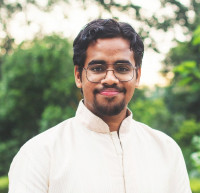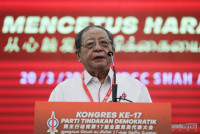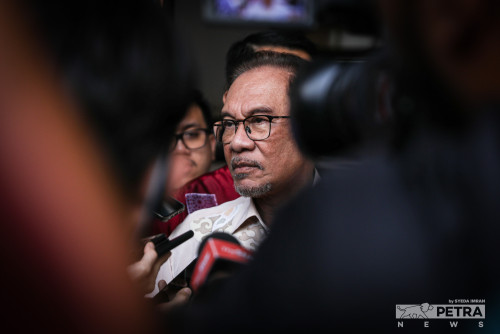IN 2020, Malaysia officially became an ageing society when two million members of its population turned 65 years old and above.
While the focus on primary, secondary and tertiary healthcare remains the focus of public healthcare discourse, an area that is constantly overlooked is the limited or non-existent capacity to provide comprehensive rehabilitative services in Malaysia.
Dire is the need that the World Health Organisation (WHO) convened a meeting in 2017 to address the urgent reforms required within the healthcare industry to pay special attention to rehabilitation.
The result of the meeting is a proposal titled “Rehabilitation 2030: A Call to Action” outlining recommendations and for a more concerted effort to be taken by governments around the world to scale up rehabilitation as the key health strategy, of which Malaysia is also a party of.
According to data by the World Bank, Malaysia is set to become a super-aged society by 2056 as 20% of the population hits 65 and over.
Investments and expenditure into rehabilitative care need to be radically increased to create more chiropractors, physiotherapists as well as occupational therapists in the country.
While many are aware of the earlier two forms of rehabilitative care, few know the function and need for occupational therapists. Data provided by Malaysian Occupation Therapy Association indicated that the country currently has approximately 1,900 occupational therapists, a far cry from countries like Korea (18,000) and Japan (95,000).
The Vibes sat down with the president of the World Federation of Occupational Therapists (WFOT), Samantha Shann, to speak more about WFOT's plans, the occupational therapy profession around the world and engagements with Malaysia’s Health Ministry.
Her visit to Malaysia is organised and supported by the Malaysian Occupational Therapy Association. Shann is in Malaysia for the Malaysian Occupational Therapists National Conference 2022 held in Penang.
The Vibes (TV): Could you introduce the role and responsibilities of WFOT? What is the relationship between WFOT and Malaysia?
Samantha Shann (SS): The WFOT was founded in 1952 to be the global voice for the profession of occupational therapy. We are a federation of 105 member organisations. From a WFOT point of view, we have official collaborations with the WHO to set the standard of practice and education for occupational therapy globally.
So, there are international standards for the education of occupational therapists, and we are an autonomous profession that is not reliant on medical direction as we conduct our own assessments, interventions, and relationships with our patients.
We work with our member organizations like the Malaysian Occupational Therapy Association to find out what issues they are facing so that we can take them higher up to the WHO and vice versa.
TV: What is occupational therapy?
SS: Occupational therapy is about helping people to regain or maintain their independence in daily occupations. Sometimes the confusion comes from the word occupation, and people think it is about returning to work – it can be about returning to paid work.
But in occupational therapy, an occupation is any activity or group of activities, which we classify as an occupation. So, anything that somebody needs to do or wants to do daily. It might be something like cleaning their teeth, brushing their hair, driving in their car, meeting friends at a cafe, or something as simple as handwriting.
Occupational therapy is a very personalised approach – there is no one pathway. The occupational therapy approach is to get to know that person, get to know their family, get to know the circumstances and work out what is important to that person.
For example, if somebody is struggling to get dressed, we might use assistive technology to help them get dressed, or sometimes we adapt the occupation. The other part that we look at is the environment like wheelchair ramps, but adaptations come in all sorts of sizes.
It might be equipment in the bathroom to enable somebody to shower or bathe more independently. It might be a better seat for somebody to be able to sit comfortably at home and be able to get in and out.
.jpg)
TV: Many people are aware of physiotherapy as rehabilitative care but the same cannot be said for occupational therapy. Why is that?
SS: Occupational therapy, in some countries has been around for over 100 years. In other parts of the world, it is just developing. But it was only in 2017 that the WHO put a focus on rehabilitation, and they launched Rehabilitation 2030.
That was when they found out that many governments across the world were not investing in rehabilitation. Malaysia is no different from many other countries and it has really been the focus of the WHO saying, you must have rehabilitation as part of your healthcare system.
TV: What are lessons Malaysia can learn from countries elsewhere to properly institutionalise occupation therapy?
SS: One of the strongest lessons to be learned from other countries certainly say, for example, from the UK where I am from, is that it is important to have a strong national voice, and to develop occupational therapy to meet the needs of Malaysia, rather than trying to copy something else.
It is important to also have a strong education system. So really investing in the education of occupational therapists that can come out and work as independent practitioners. Occupational therapy is so diverse in the type of people we can work with – there is no set pattern.
We need to look at how healthcare is delivered in Malaysia.
TV: What are the initiatives and projects WFOT is working on now?
SS: We are looking at workforce planning to make sure that there are more occupational therapists around the world and to make sure that they are educated to a high level.
We are doing a lot of work with assistive technology, digital as well as non-digital assistive technology and how occupational therapists can be assessors and providers of assistive technology.
We are seeing certainly after the Covid pandemic, that there is a global need for mental health intervention, and it is not just psychosis, but loneliness and depression. We are also doing a lot of work with humanitarian sponsors, working on issues like war and natural disasters.
What we see when there are natural disasters is that people with disabilities often get left behind. Those are our big focus at the moment. – The Vibes, July 6, 2022



__President_of_the_World_Federation_of_Occupational_Therapists_Credits_Samantha_Shann.jpg)















.jpg)
